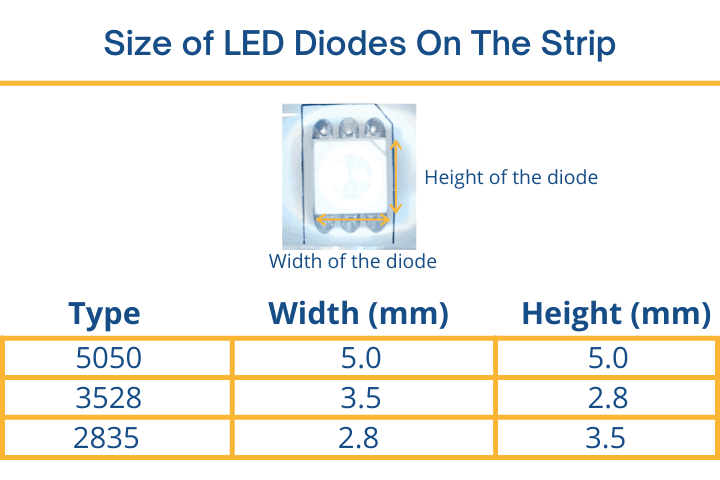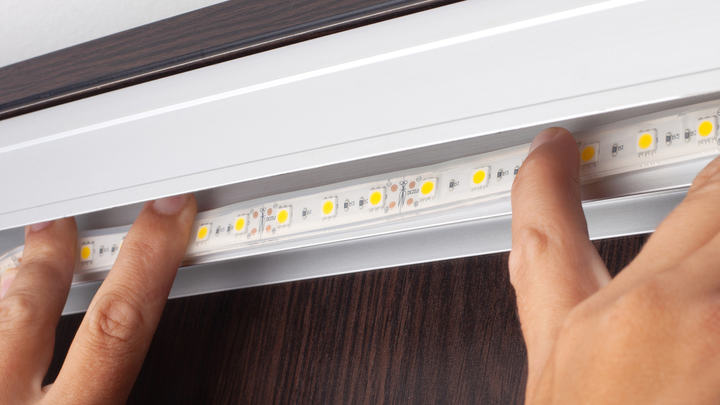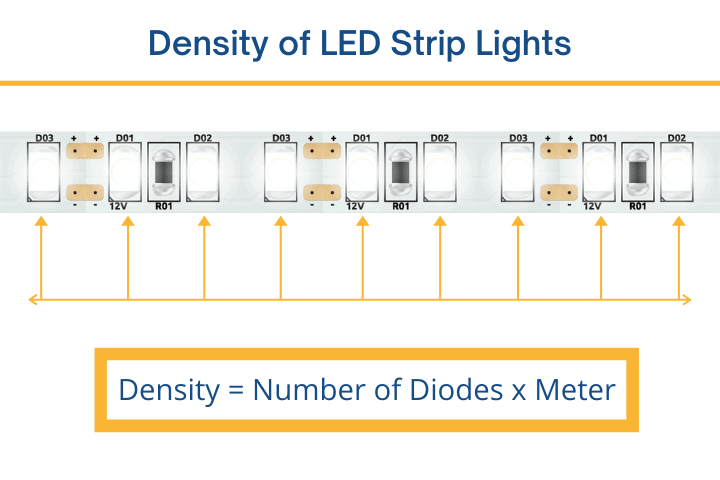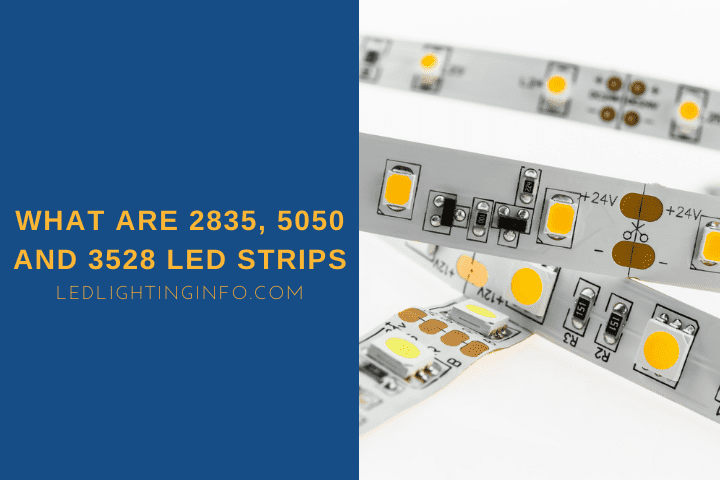If you’re shopping for LED strip lights, you’ll probably notice that they often have a four-digit number on the box or listed in the product detail.
It’s likely to either be 2835, 3528, or 5050 (although there are other options too). What does that code mean, and what are the differences between them?
The four digits refer to the size of the LED chips in millimeters. The larger the chip, the larger the diode and brighter the light – but other factors, including density, are just as important to how bright the strip is overall.
In this article I’ll explain:
- What those four digits mean in full
- Whether the chip size matters
- If bigger LED chips use more electricity
- The importance of density vs. size
2835 vs 5050 vs 3528: What Are The Four Digit Numbers On The Strip?

The four digits on a light strip refer to the size of the LED chips being used, measured in millimeters. The first two digits are the width of the chip, and the second is the height.
So, a 3528 strip has chips that are 3.5mm wide and 2.8mm tall, while a 5050 strip has chip dimension that is 5mm wide (5.0) and 5mm tall.
That means that 3528 and 2835 light strips have chips of the same size but in a different orientation.
Except that just because they’re the same size, that doesn’t mean they’re the same chips.
What Does SMD Stand For?
In the world of LED strip lights, SMD stands for Surface Mounted Diode, also referred to as Surface Mounted Device, in a more general term. This refers to an LED light that has no long wires, so can be directly mounted onto an LED strip.
Older LED technology still had (comparatively) long leads, but now modern chip types are more compact. SMD LEDs can be packed closer together to improve density, and it allows for the different sizes of SMD chip on a single LED strip light, for more flexibility in your options.
Why Is LED Chip Size Important?

The size of the chip impacts the size of the diode that the chip can hold, and a larger diode can sometimes be brighter.
A 5050 chip gives a much brighter output than a 3528 chip, because the chip is larger and can therefore produce more light.
However, a 2835 chip on an LED strip isn’t just a simple rotation of a 3528 chip, and is usually more efficient than a 5050 chip, meaning they often produce the same brightness level while drawing less power.
Part of the reason is that the chip uses a diode that makes much better use of the space available.
On a 3528 or 5050 chip, the diode will be circular, but on an SMD 2835, it takes up almost the entire surface of the chip itself.
It’s worth noting that 2835 also generally has other advantages, like better heat dispersion, which means it has a longer lifespan.
Advantages of SMD 5050 LED Strip
There’s one particular reason you may prefer a 5050 light strip – if you want one with customizable lighting colors.
RGB options are some of the more popular LED light strips, because people enjoy being able to change color to suit the mood.
If you want that, then you’ll be buying a 5050 LED strip, as that’s the size needed to host the three diodes – red, green, and blue.
It’s worth considering whether you really need an RGB strip, though – while they can create up to 16 million colors, the one that they struggle with is white.
A strip that’s dedicated to white will be able to produce a better quality of white light, instead of the combination of the red, green, and blue diodes in an RGB strip. It’s a better choice for anywhere you need task lighting, since it’ll be a brighter color that helps keep you focused.
You’ve more flexibility for accent lighting, since light intensity isn’t as important – you can choose from all the LED strip options.
Do Bigger SMD 5050 LED Chips Use More Electricity?

Bigger and brighter chips will use more electricity, but again they aren’t the only factor. And the efficiency of the 2835 chip does mean it’s not a simple scale, either.
It’s easiest to show a comparison. This is with what would be considered a high-density strip – it shows a really clear difference.
| LED chip type | Power draw per chip | Power draw per meter (60 LED strip) | Average lumens per meter |
|---|---|---|---|
| 3528 | 0.08w | 4.8w | 330-360 |
| 2835 | 0.2w | 12w | 720-1,300 |
| 5050 | 0.24w | 14.4w | Around 1,000 |
You can see that, for a 1-meter light strip, the 5050 chip will draw more power than either the 3528 or 2835. But often, 2835 will be brighter.
Again, we’re comparing like-for-like in terms of density here too, but that’s where there’s another benefit of the 2835 chip.
Higher LED Density vs Bigger LED Chips

Density means how many LED chips there are on the strip and is preferable measure. It’s always measured in LEDs per meter because you can have light strips much longer than a single meter. So this gives a standard comparison.
The standard tends to have 30 LEDs per meter, but you can get light strips with 60, 120, or even more.
But not with every chip size.
Think about it – a 5050 chip measures 5mm across. You can’t have chips touching. There needs to be space in between them for wiring.
Most 5050 strips are 30 or 60 LEDs per meter because that’s all the space you have.
Not so with a smaller chip like 2835, which can quite comfortably fit up to 120 LEDs per meter, which means you can get a much brighter strip – up to 2,600 lumens per meter!
But it’s not all about brightness. The biggest benefit of a high-density LED strip is more uniform lighting.
The closer the LEDs are packed together, the more the light looks like one continuous source.
If the LEDs are spaced out, you can see each chip’s individual glow – you can see the individual spots of light.
That doesn’t mean you have to buy a high-density LED strip light if you want a uniform light, though. Depending on where you place the strip, you might still get the same effect.
If you can diffuse the lighting behind a cover or place it near the surface you want to illuminate – such as in coving, facing upwards – you’re more likely to get that clean uniform effect.
Final Words
While the most obvious difference between 2835, 3528, and 5050 LED light strips is the size of the chip, it actually has a big impact on brightness, power efficiency, and how many LEDs can fit into a strip.
There are many other things to consider, including making sure you pick a power supply that can handle the length of the strip, finding the right color, how to fit your strip… it’s a minefield.
Thankfully I’ve got a guide that covers everything.
But unless you want an RGB lighting strip, the brightest and longest-lasting one will be a 2835 strip. And it’ll also be the most expensive, so bear that in mind too.

